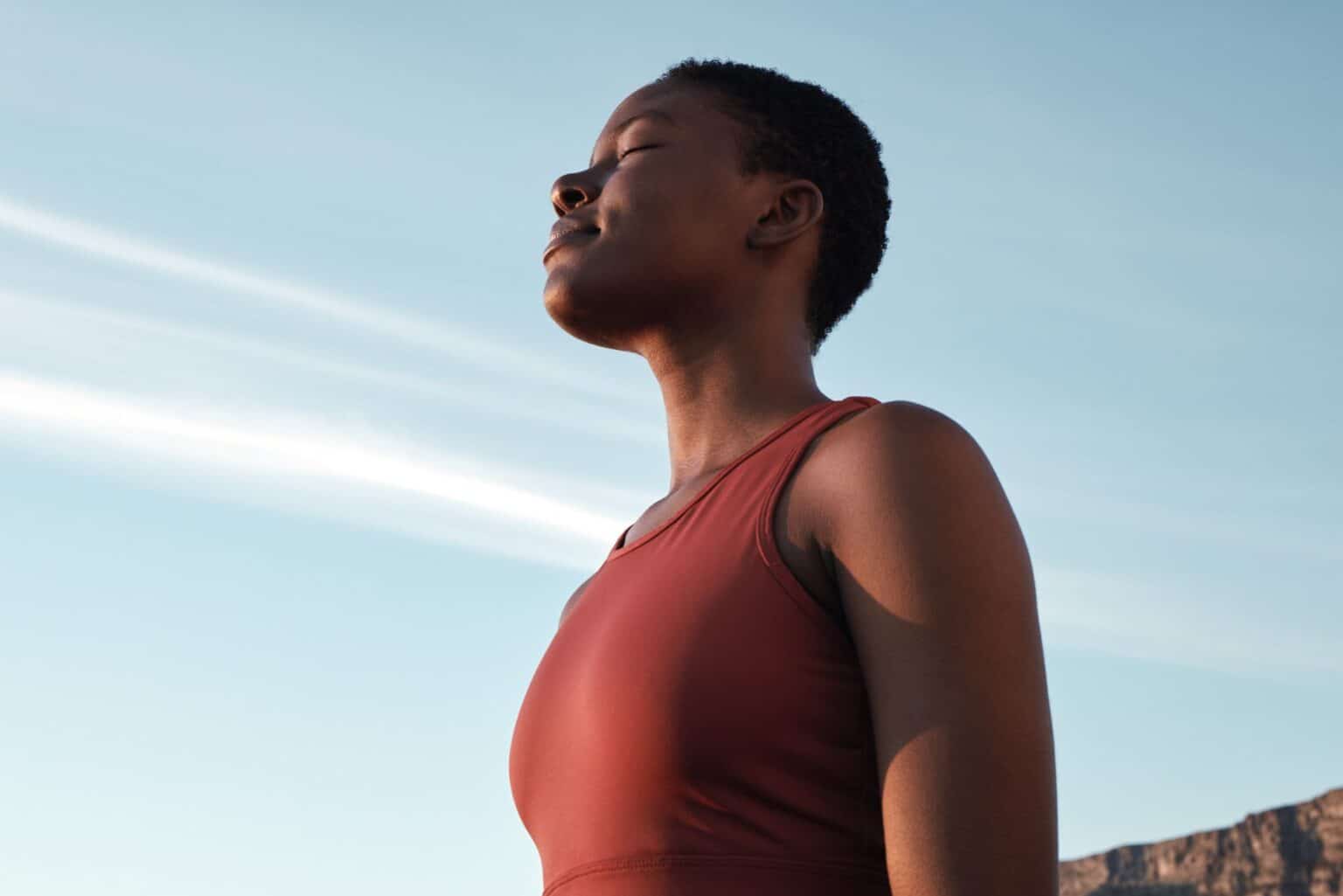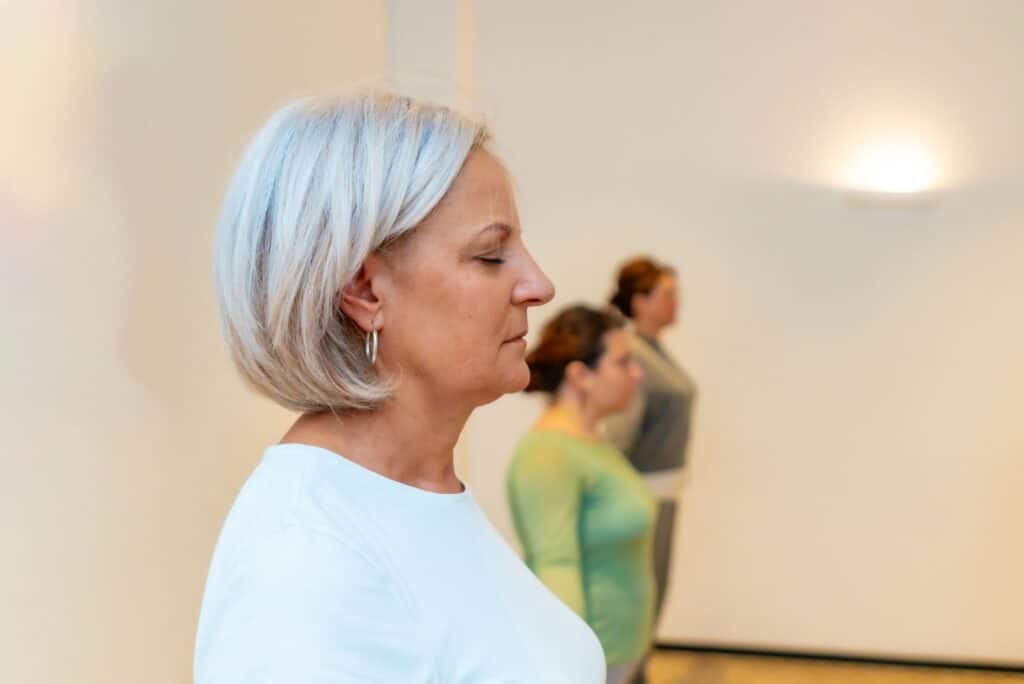


“Breath is life.” This adage may seem like a cliché, but for runners, it holds a lot of truth.
Running requires synchronised movement of multiple muscles and organs in the body, and efficient breathing plays a crucial role in this process.
Maintaining healthy lungs is essential for optimal running performance, as they ensure your body receives the oxygen it needs for endurance and recovery.
In recent years, there has been a growing trend among runners to incorporate breath training into their workouts. From yoga-inspired techniques to specialised devices, breath training is becoming an integral part of many runners’ routines. Breath training not only improves breathing efficiency but also supports healthy bodies and overall physical health for runners. But what exactly is breath training, and how does it benefit runners?
Here we look at breath before speed: how breath training is shaping the new era of runners.
Breath training, also known as breathwork, refers to a variety of techniques and exercises designed to improve the way we breathe. Most of us take breathing for granted, but when it comes to physical activities like running, proper breathing can make all the difference.
When we run, our body needs more oxygen to fuel our muscles. This is where efficient breathing becomes crucial. Several factors, such as age, health conditions, and lifestyle choices, can decrease lung capacity and breathing efficiency, making it harder to perform at our best. As we age, our lungs lose some of their elasticity, which can further decrease our ability to take in oxygen and expel carbon dioxide. This makes breath training even more important for maintaining performance.
If we are not taking in enough oxygen or expelling carbon dioxide effectively, our performance will suffer. Additionally, incorrect breathing patterns can lead to fatigue and discomfort during runs.
Breath training offers many benefits for runners and is an often-overlooked tool that can make a big difference for runners of all levels. By focusing on how you breathe during your runs, you can improve performance, build endurance, and even reduce the risk of injury while helping to keep your lungs healthy.
Whether you’re training for a marathon or simply looking to make your daily jogs more effective and enjoyable, learning proper breathing techniques can transform your running experience.
Here are some key benefits of breath training that every runner should know.
Breath training and regular exercise are essential for keeping your lungs healthy and supporting overall respiratory health.
Why not try one of these simple, effective breathing strategies below? Each technique is a breathing exercise designed to improve your running performance and support better respiratory health. They will help you breathe more efficiently while running. When trying out a new breathing technique, start slowly so that you can get a feel for it before picking up the pace.
For best results, practise diaphragmatic breathing as part of your routine to enhance lung capacity, and be sure to repeat these exercises regularly to maximise their benefits.

Diaphragmatic breathing, or belly breathing, uses the diaphragm to fill the lungs with oxygen and expel waste gases. This technique can increase lung capacity and improve overall lung function by helping you use your lungs to their full capacity. By consciously engaging the diaphragm, a large muscle located below the lungs, and focusing on the movement of the abdomen, you can breathe more deeply, allowing more oxygen into the body and helping to regulate your breathing rhythm during exercise. Diaphragmatic breathing also improves your ability to exchange oxygen and carbon dioxide efficiently.
How to do it: Lie on your back with one hand on your chest and the other on your abdomen. As you inhale through your nose, focus on expanding your abdomen like a balloon while keeping your chest relatively still. Then exhale slowly through pursed lips, gently contracting your abdominal muscles. Once you have mastered this technique while lying down, try it while standing or sitting. Focus on keeping your shoulders relaxed and initiating the breath from deep within the abdomen. Pursed lip breathing can also be used alongside diaphragmatic breathing, especially for those with breathing difficulties, to help keep airways open longer and further improve oxygen exchange.
While running: Master this technique while resting, then incorporate it during your runs. First, try it during a slow run and gradually increase to longer running intervals.
Benefits: Deeper breathing, improved oxygen exchange, increased stamina, reduced risk of side stitches, enhanced VO2 Max, and better use of your lungs to their full capacity.
Rhythmic breathing is a technique runners use to optimise their breathing and boost performance. It involves matching your breath to your steps, typically in a 2:1 or 3:2 pattern (e.g., inhale for 2 or 3 steps, exhale for 1 or 2 steps). This method helps regulate oxygen intake and carbon dioxide release, improving endurance and conserving energy.
Rhythmic breathing promotes a smooth flow of air in and out of the lungs, which enhances respiratory efficiency. By practising rhythmic breathing, runners can enhance lung function and maximise oxygen efficiency during exercise.
How to do it: Count or wear headphones and practise matching your breathing to the beat or every other beat. Maintaining open airways is important for effective rhythmic breathing, as it allows for better airflow and oxygen exchange.
While running: Start by taking slow, deep breaths before beginning your run. Once you start running, try to synchronise your inhales and exhales with your steps. Find a pattern that works for you – 2:1 or 3:2 are common ratios, but feel free to adjust according to your pace and comfort level. As you continue running, maintain this rhythm and focus on the feeling of your breath as it moves in and out of your body.
Easy runs – 3:3 pattern, inhale for 3 steps, exhale for 3 steps
Moderate runs – 2:2 pattern, inhale for 2 steps, exhale for 2 steps
Harder runs – 2:1 pattern: Inhale for 2 steps, exhale for 2 steps. 1:2 pattern: Inhale for 1 step, exhale for 2 steps. These patterns are useful for final bursts at the end of a race or during intense interval training.
Benefits: Improves running efficiency, reduces impact stress on the body, and helps prevent injuries.
Nasal breathing, or solely taking in air through the nose rather than the mouth, has gained popularity in the running community. This technique is believed to improve breathing efficiency and reduce fatigue during runs. Nasal breathing enhances performance and boosts CO2 tolerance by activating the parasympathetic nervous system. It involves inhaling and exhaling through the nose.
How to do it: Simply breathe in and out through your nose.
While running: Breathe in and out through your nose. This skill takes practice and should be introduced gradually, starting with lower intensity and progressing to higher levels. At first, you may need to alternate between nasal and mouth breathing as your body adjusts.
Benefits: improved oxygen uptake, increased capillary density, more relaxed state, and higher CO2 tolerance. Nasal breathing allows you to take in oxygen as well as other gases present in the air, such as nitrogen and carbon dioxide, which are part of the normal composition of inhaled air. This helps support normal lung function during running.
Proper posture is essential for effective breathing while running. Runners often hunch their shoulders forward when tired, which can impact their ability to breathe efficiently.
How to do it: Hunch over and take the biggest breath you can. Then, sit up straight, pull your shoulder blades back, and take another deep breath. Which one felt easier?
While running:
Tip: You can also practise proper posture and breathing exercises while sitting in a chair with your feet flat on the floor and your knees and legs comfortably positioned, or lying on a bed for extra comfort. This helps reinforce good habits and makes breathing exercises more accessible.
Strength training will make this easier, focusing on muscles like the upper lats and core, which are really important. Incorporate exercises like glute bridges and planks as demonstrated by Jack Winyard from Winchester Physio & Health.
In the meantime, practise running with correct posture in short intervals each week until you can maintain it for your entire run.

In yoga, ‘Dirgha Pranayama’ (three-part breath) is a powerful technique that emphasises controlled and mindful breathing. This practice can be especially beneficial for runners, as it helps improve lung capacity, enhances breathing efficiency, and reduces race-day anxiety.
Yoga and breathing exercises are also particularly helpful for individuals with chronic lung diseases such as asthma, COPD, and emphysema. These practices can support better oxygen exchange, alleviate symptoms, and improve overall lung function. However, if you have a respiratory condition like asthma, COPD, or emphysema, it is important to consult your healthcare provider or doctor before starting new breathing exercises to ensure safety and receive appropriate guidance.
Yoga poses work to strengthen the respiratory muscles, while breath-holding exercises train the diaphragm to better respond to oxygen demands. By incorporating pranayama (breath control) into your routine, you can optimise oxygen intake and boost your performance during runs.
Curious about learning more about the benefits of yoga for runners? Why not check out our article: Why Yin Yoga Should Be a Runner’s Best Friend.
Breath training is more than just a trend; it’s a game-changer for runners of all levels. By improving breathing efficiency, enhancing endurance, aiding pacing, reducing stress, and even preventing injuries, it addresses many of the challenges runners face.
Whether you’re a seasoned marathoner or new to running, incorporating breath training into your routine can elevate your performance and make your runs more enjoyable.
Remember, the way you breathe can make all the difference, so take a deep breath and let it fuel your next stride.
It is best to breathe through both your nose and mouth while running. Breathing through your nose can help filter the air you inhale, but breathing through your mouth allows for a larger volume of oxygen intake. Experiment with what feels most comfortable for you.
Practising deep belly breaths and incorporating diaphragmatic breathing exercises into your training routine can help improve your overall breathing technique. It is also important to maintain good posture while running to allow for optimal lung expansion and air intake. For best results, repeat these exercises regularly.
While there is no definitive answer, proper breathing techniques may help reduce the likelihood of experiencing side stitches. If you experience symptoms such as shortness of breath or other symptoms like chest pain or dizziness, it may indicate a need to consult a doctor.
In addition to incorporating proper breathing techniques, there are other ways to improve your lung capacity for running. Cardiovascular exercises such as swimming, cycling, and interval training can help strengthen your lungs and respiratory muscles.
It has been proven that performing breathing exercises outside of running, such as using an incentive spirometer or practising pranayama (yogic breathing), can also improve lung capacity over time.
Techniques like pursed lip breathing help keep the airways open longer, which is especially useful for people with COPD or asthma, as they can enhance airflow and support better breathing efficiency. Recognising symptoms such as shortness of breath and fatigue is important, especially for individuals with chronic lung conditions.
Join our mailing list to stay up to date with the latest UK running events, training tips, and exclusive offers on running products. Rest assured, we value your privacy and would never dream of selling your address. Sign up now…
Share this article
Did you know that the world record for completing a half marathon is 57 minutes...
As a runner, you may have experienced those days when your legs feel tired and...
For many people, the thought of running conjures images of sprinting at top speed, pushing...
Pick up any running book or running magazine, listen to a coach down a running...
Designed by our head coach, Mike Gratton, winner of the 1983 London Marathon, this 12-week...
Running cadence is an essential aspect of running that can greatly impact your performance and...
We’re here to make sure you’re up-to-date with the latest running tips, events and product discounts – we’ve always got your back! Rest assured, we value your privacy and would never dream of selling your address.
BONUS: Sign up today and receive a FREE code for our Sub-4-Hour Marathon Plan